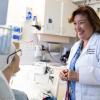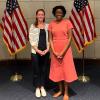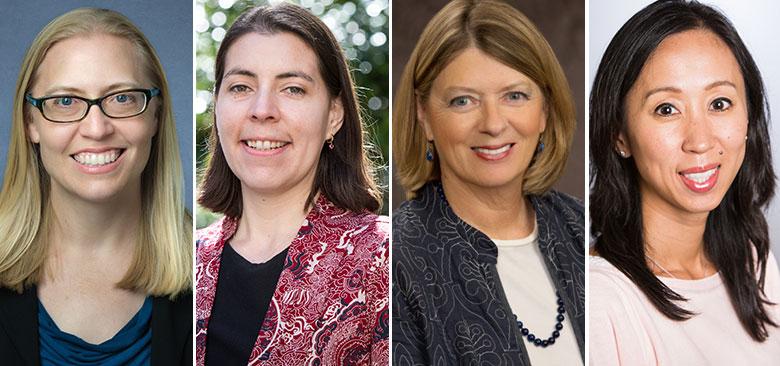
Pictured from left: UCSF School of Nursing experts Laura Wagner, Stacy Torres, Susan Chapman and Linda Park.
From the Experts: The One Change We Must Make to Meet Older Adults' Needs
By 2030, the number of Americans age 65 and older is projected to grow 55%, presenting a major health care challenge for the nation. Experts at the UCSF School of Nursing provided their recommendations to the following question: What one change is needed to meet the diverse, complex needs of older adults?
Laura Wagner, PhD, RN, FAAN, Associate Professor
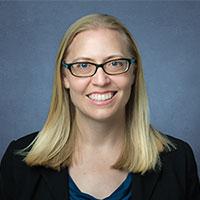 Laura Wagner “By 2042, ethnic and racial minorities will comprise the majority of the population in the United States, combined with the fact that older Americans are the fasting growing demographic. Given our knowledge on the importance of race and language concordance in providing the best quality of care to patients, having a care provider who “mirrors” the population they are serving is critical.
Laura Wagner “By 2042, ethnic and racial minorities will comprise the majority of the population in the United States, combined with the fact that older Americans are the fasting growing demographic. Given our knowledge on the importance of race and language concordance in providing the best quality of care to patients, having a care provider who “mirrors” the population they are serving is critical.
"Over the next 20 years, we need to double (or triple) our efforts to rapidly build and scale up the nursing workforce in order to meet the demands of the rapidly changing face of older Americans, especially among the older Latine population. This expansion includes training and mentoring nurses who specialize in primary care of older adults so they can thrive in their own homes, to lead and manage innovative elder care models, and to build a diverse nursing faculty in older adult care.”
Stacy Torres, PhD, Assistant Professor
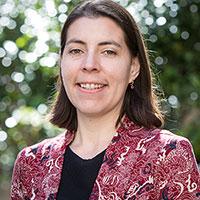 Stacy Torres “To meet the diverse, complex needs of older adults, we must ensure safe and accessible public spaces for those facing growing health issues, challenges to maintaining social connections, and financial pressures from escalating health care costs, gentrification, affordable housing shortages and pandemic-induced inflation.
Stacy Torres “To meet the diverse, complex needs of older adults, we must ensure safe and accessible public spaces for those facing growing health issues, challenges to maintaining social connections, and financial pressures from escalating health care costs, gentrification, affordable housing shortages and pandemic-induced inflation.
"COVID-19 has upended daily routines for many and created hurdles to remaining physically active and socially connected. Aging in place involves more than growing older within the confines of a dwelling but encompasses the array of neighborhood places beyond a residence that transform a collection of sidewalks and storefronts into home. Spaces such as coffee shops, libraries, parks, plazas and senior centers support a range of needs, providing crucial venues for avoiding social isolation and obtaining services such as free and low-cost meals. Cultivating age-friendly communities necessitates deliberate consideration in urban planning to bolster communities that help people of all ages and abilities thrive. A local exemplar of this inclusive approach is Fruitvale Transit Village in Oakland, California, a mixed-use development that contains retail space, affordable housing, a senior center, library, weekly farmer’s market, and sun-drenched public plaza.”
Susan Chapman, PhD, RN, FAAN, Professor
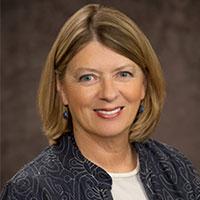 Susan Chapman “The lack of financing, especially to meet social determinants of health, and coordination across programs are well-known problems in caring for older adults with complex medical and social needs. Programs are fragmented, benefits and financing are inconsistent across states and payers, and the consumer voice is not being heard. In the U.S., we’ve known about these structural and systemic problems for a long time. These are big fixes but are what is needed.
Susan Chapman “The lack of financing, especially to meet social determinants of health, and coordination across programs are well-known problems in caring for older adults with complex medical and social needs. Programs are fragmented, benefits and financing are inconsistent across states and payers, and the consumer voice is not being heard. In the U.S., we’ve known about these structural and systemic problems for a long time. These are big fixes but are what is needed.
“Anyone who has had personal experience caring for older family members with complex needs knows it takes a case manager professional, financial manager and/or family member filling these roles just to find information, navigate the system, coordinate services, and figure out what is covered (paid) and what is not. This work all too often has to take place before any needed services are delivered. “One stop shopping” for senior services is not a novel concept but attempts to deliver this model cannot be truly successful unless the U.S. is willing to undertake significant structural changes. At the federal and state level, lawmakers must boost funding for long-term health and social care, improve coordination across programs and services, and make it easier for older adults to access the care they need.”
Linda Park, PhD, RN, FAAN, Associate Professor
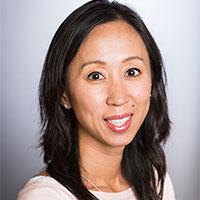 Linda Park "One meaningful way to meet the diverse, complex needs of older adults is to leverage technology to promote social connections for mental and physical health as well as health care access. Social connections are incredibly important for older adults to promote quality of life and healthy behaviors as well as mitigating a host of adverse health outcomes including depression, dementia, cardiovascular disease, pain, fatigue, etc. With the COVID-19 pandemic, one major transition that many health care systems and patients alike were forced to quickly implement was the use of telehealth visits. To our relief, this transition was generally met with positive outcomes.
Linda Park "One meaningful way to meet the diverse, complex needs of older adults is to leverage technology to promote social connections for mental and physical health as well as health care access. Social connections are incredibly important for older adults to promote quality of life and healthy behaviors as well as mitigating a host of adverse health outcomes including depression, dementia, cardiovascular disease, pain, fatigue, etc. With the COVID-19 pandemic, one major transition that many health care systems and patients alike were forced to quickly implement was the use of telehealth visits. To our relief, this transition was generally met with positive outcomes.
"A couple of my research team’s projects with telehealth yoga for heart failure patients and virtual cardiac rehabilitation showed that older adults welcome engagement in technology-based solutions and hybrid approaches. Digital health offerings should continue to be explored and leveraged beyond the pandemic to offer opportunities for social connection. Digital solutions are especially vital for older adults who otherwise do not have resources to engage in health promotion and health care activities (e.g., transportation barriers, rural dwelling, cost)."


